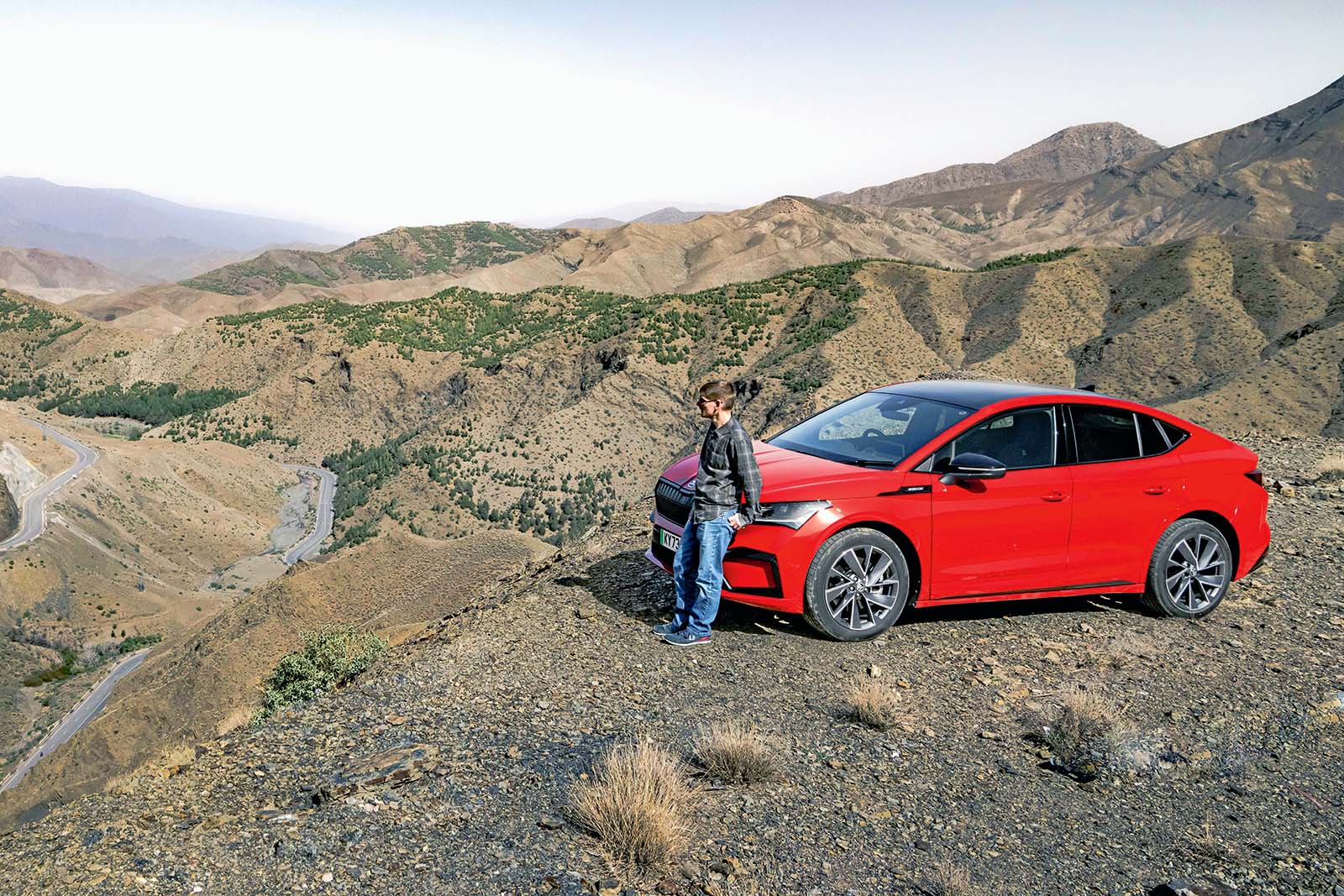I suspect its mechanics have never encountered an EV, so I’m cautious when I turn onto the desert track that leads to the camp. Still, the Enyaq has four-wheel drive and it would be a shame not to use it. And while it’s absolutely not a dedicated off-roader, it copes with the loose gravel and shifting sand with ease.
With the sun low in the sky and the temperature dropping faster than the charge in the Enyaq Coupé, I reach camp. It’s not as basic as it sounds: my tent has a proper bed, toilet and electricity. Although, given that the power cuts out enough to make charging a laptop challenging, you realise the infrastructure is some way from being able to cope with EVs.
Our berber hosts serve up a tajine, supplemented by bread baked in the embers of the campfire. It’s an ancient tradition, although they use their phone flashlights to check if the bread is cooked. Modern tech benefiting an ancient lifestyle? There’s an EV metaphor in there somewhere. But it has been a long day and I want to get up early for the desert sunrise.
No EV charging beyond this point
The early start is worth it, both for the spectacular sunrise and the appearance of a train of camels brought by the berbers. Camels are famously efficient: they can consume hundreds of litres of water in minutes, then go more than a week without drinking. Fast charging and incredible efficiency? There’s another aspirational EV metaphor in there somewhere.
I reached the Sahara with just under 50% charge left, but this isn’t a place to push it. And why do that when I can visit the Sbai Palace n M’Hamid? It has a pool, excellent Moroccan tea, free wi-fi – and a pair of 22kW EV chargers.
Full disclosure: the chargers are here because of Skoda UK, which installed them at the desert hotel to make this trip easier. But credit to the hotel’s owner for agreeing, anticipating that they might boost his Tripadvisor score in future.

